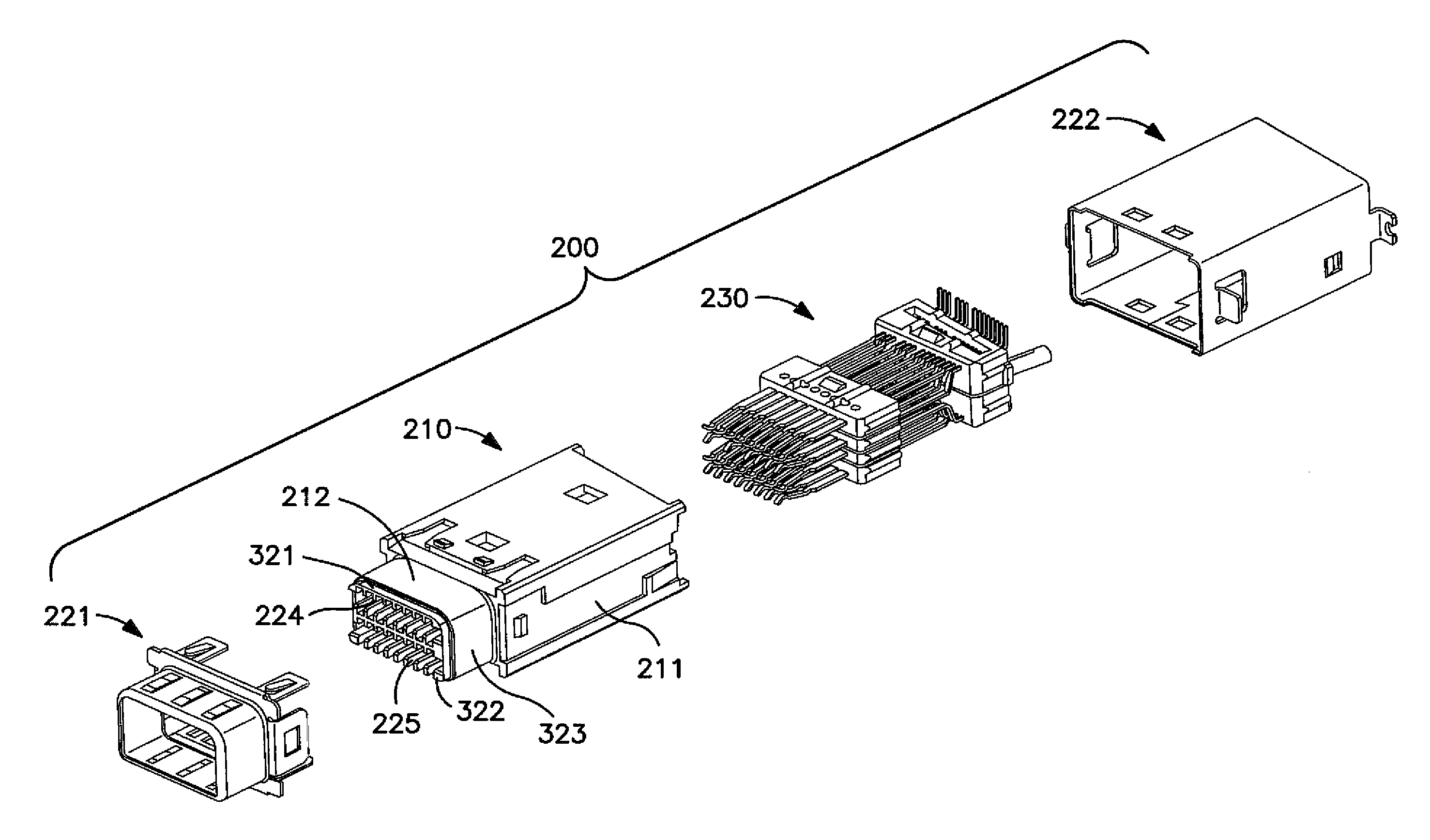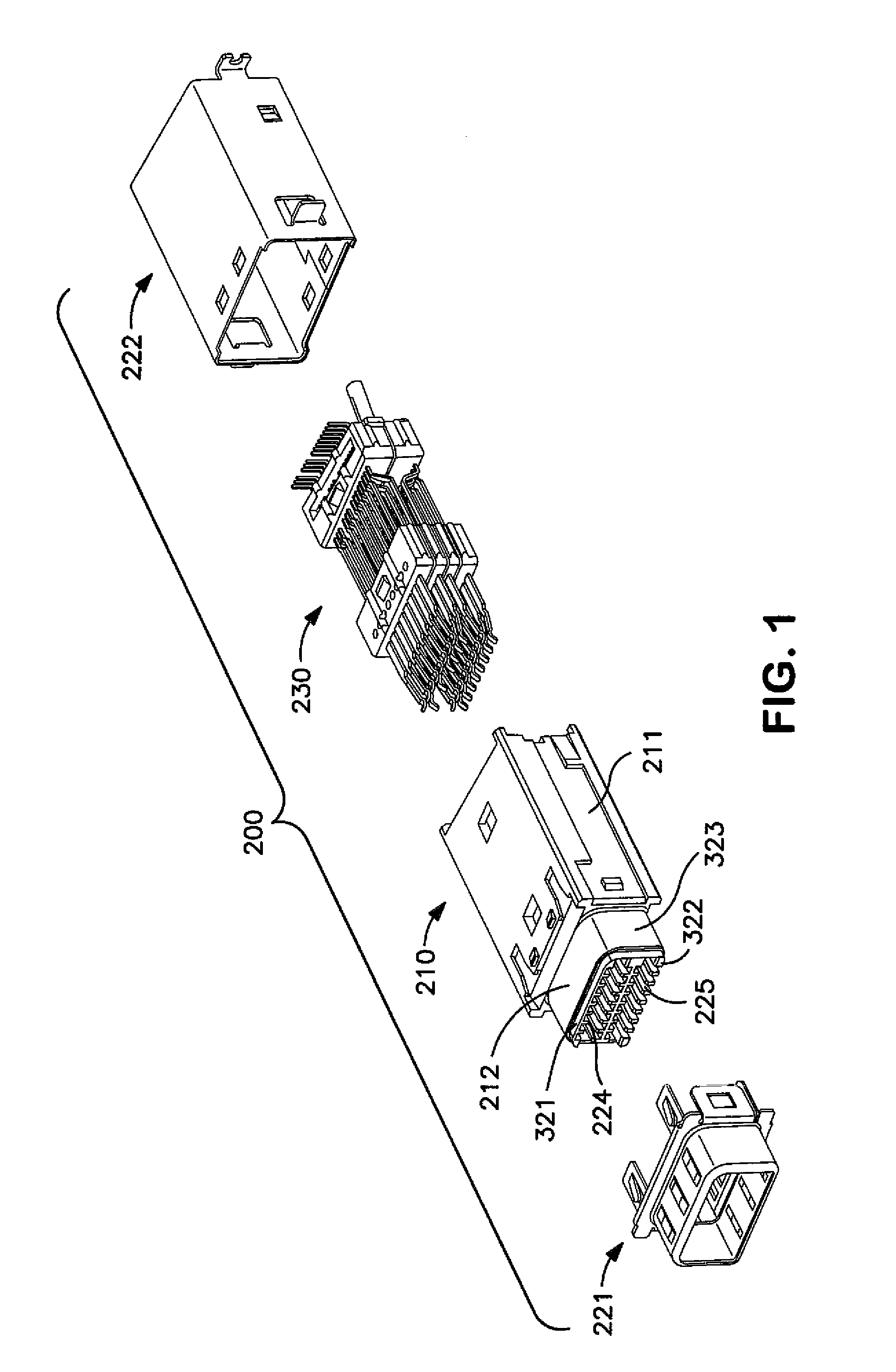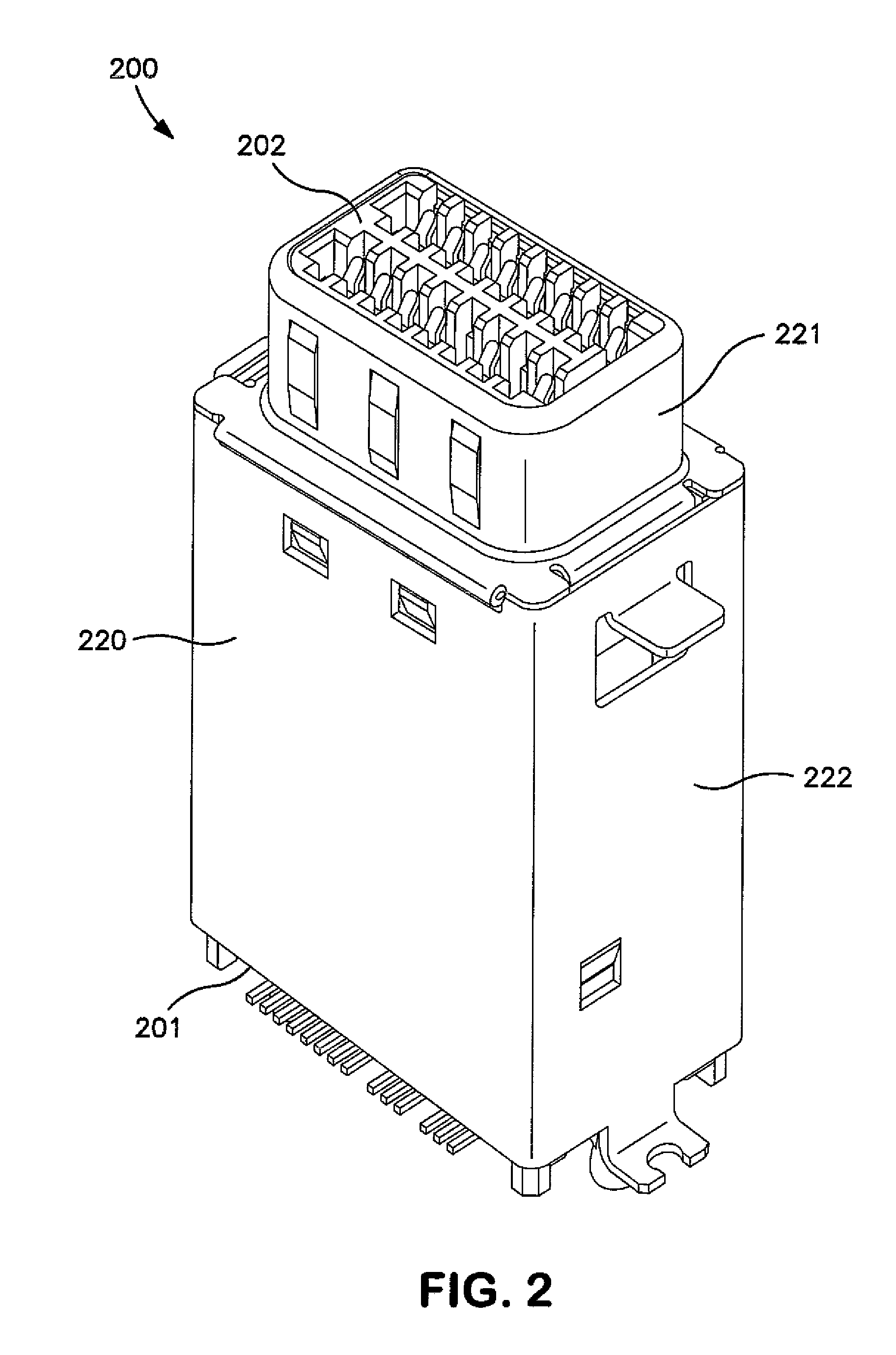Polyarylene Sulfide/Liquid Crystal Polymer Alloy and Compositions Including Same
a technology of polyarylene sulfide and polymer alloy, which is applied in the direction of liquid crystal compositions, chemistry apparatuses and processes, etc., can solve the problems of affecting the composition quality, the compatibility of liquid crystal polymers and polyarylene sulfides, and the formation of mold surface deposits
- Summary
- Abstract
- Description
- Claims
- Application Information
AI Technical Summary
Benefits of technology
Problems solved by technology
Method used
Image
Examples
example 1
[0160]A polyphenylene sulfide (Fortron® 0214 natural polyphenylene sulfide available from Ticona Engineering Polymers) is melt processed at 310° C. with one of several different disulfide compounds as follows:
[0161]L-Cystine
[0162]Diphenyl disulfide (DPDS)
[0163]Dithiobenzoic acid (DTSA)
[0164]Dihydroxyphenyl disulfide (DHDS)
[0165]4-Aminophenyl disulfide (4-APDS)
[0166]2-Aminophenyl disulfide (2-APDS)
[0167]The loading level of each disulfide compound is varied up to 1 wt. % disulfide. The melt viscosity obtained for each sample is illustrated in FIG. 6. As can be seen, melt processing of a disulfide compound with a polyarylene sulfide leads to a reduction in melt viscosity of the product.
example 2
[0168]Materials that are used in forming samples for testing include the following components:
Reactively Functionalized Disulfide Compound
[0169]2,2′Dithodibenzoic Acid[0170]3,3′Dihydroxyldiphenyl Disulfide
[0171]Pentaerythritol Tetrastearate[0172]Polytetrafluoroethylene available under the trade name Dyneon®
[0173]Fiber glass 910A-10C 4 mm, available from Owens Corning, Inc.
Polyarylene Sulfide
[0174]Fortron® 0214 natural polyphenylene sulfide available from Ticona Engineering Polymers.[0175]Fortron® 0214 MP polyphenylene sulfide available from Ticona Engineering Polymers.[0176]Fortron® 0203BG SF3001 Natural polyphenylene sulfide available from Ticona Engineering Polymers
[0177]Vectra® E950iRX available from Ticona Engineering Polymers.[0178]Vectra® E9500I, VD3003K20, BLACK available from Ticona Engineering Polymers.
[0179]The specific formulation for each tested material is provided in Table 1, below.
TABLE 1Sample No.0010020030040050062,2′-Dithio...
example 3
[0189]Samples are formed in a single step extrusion process as described in Example 1. A phosphite stabilizer, Doverphos S680 available from Dover Chemical Company, is included in Sample Nos. 009 and 010. Formulations are as shown in Table 4, below:
TABLE 4Sample No.0070080090102,2′-Dithiodibenzoic acid—0.40%——Phosphite Stabilizer—— 0.5% 0.5%PETS 0.3% 0.3% 0.3% 0.3%PTFE 2.0% 2.0% 2.0% 2.0%Vectra ® E950iRX14.3%13.9%14.3%13.9%Vectra ® E9500I, VD3003K20, 5.0% 5.0% 5.0% 5.0%BLACKGlass fiber40.0%40.0%40.0%40.0%Fortron ® 0214—38.4%—37.9%Fortron ® 0203B6 SF300138.4%—37.9%—Total 100% 100% 100% 100%
[0190]The extruded pellets are tested for ash content and melt viscosity, with results summarized in Table 5.
TABLE 5Sample No.007008009010Ash %40.6740.5540.7540.53Melt viscosity477.1569.1444633
[0191]The samples are injection molded and tested for certain properties as summarized in Table 6.
TABLE 6Sample No.007008009010Tensile Modulus (MPa)16758161711702617181Tensile Break Stress (MPa)142.20147.501...
PUM
| Property | Measurement | Unit |
|---|---|---|
| temperature | aaaaa | aaaaa |
| melt viscosity | aaaaa | aaaaa |
| recrystallization temperature | aaaaa | aaaaa |
Abstract
Description
Claims
Application Information
 Login to View More
Login to View More - R&D
- Intellectual Property
- Life Sciences
- Materials
- Tech Scout
- Unparalleled Data Quality
- Higher Quality Content
- 60% Fewer Hallucinations
Browse by: Latest US Patents, China's latest patents, Technical Efficacy Thesaurus, Application Domain, Technology Topic, Popular Technical Reports.
© 2025 PatSnap. All rights reserved.Legal|Privacy policy|Modern Slavery Act Transparency Statement|Sitemap|About US| Contact US: help@patsnap.com



